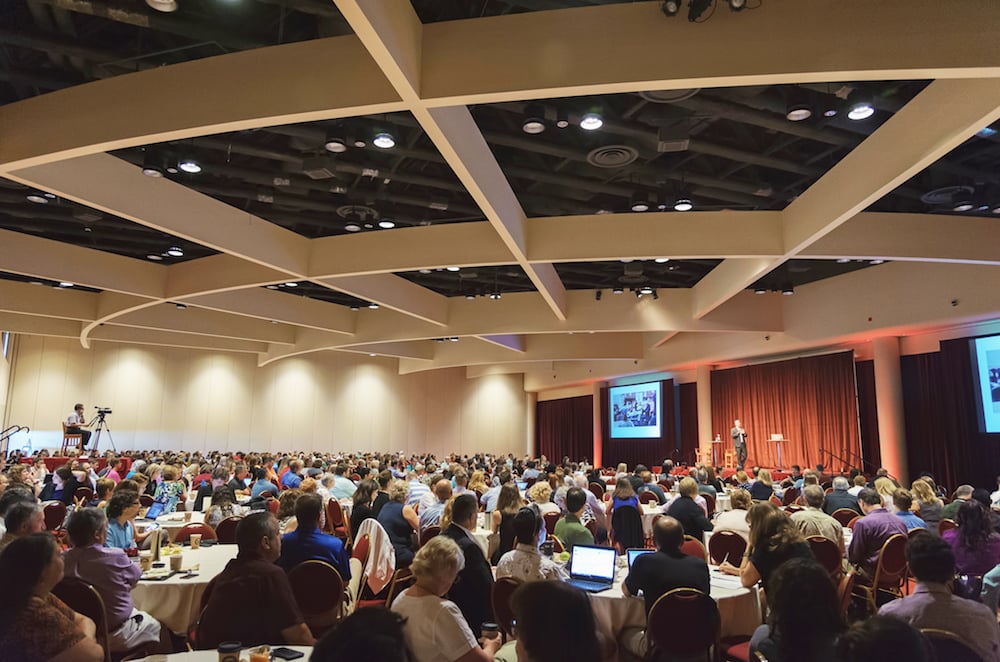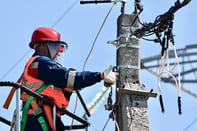Published on
Reigniting Your Passion for Distance Teaching and Learning

I was fortunate to attend this year’s Distance Teaching & Learning Conference in Madison. It was striking to realize how fast technology is continuing to move/change/innovate while we slowly progress in changing the design/development/evaluation of instruction.
I have been both a witness to and a participant in the field of education for over 40 years. Yet, some things that I was taught as an undergraduate in the early 1970s (e.g., writing and evaluating learning achievement using behavioral objectives) are still being discussed, as is the importance of investing in instructional design and evaluation, even in times of budget cuts.
There were no computers or cell phones when I started teaching. Instructional media included films, filmstrips and overhead transparencies. Some long-term educators who once talked about having been passionate about distance education, now describe themselves as being worn down and nearly burned out. So how do we turn their flickers of light back into flames of passion? Conversing with colleagues in an innovative and thought-provoking environment is a good start!
During the conference, I attended sessions providing a glimpse of technologies with applications that are currently transforming the educational experience for students and others that have the potential to transform learners’ education in the future. One need only look at the instant popularity and universal acceptance of Pokemon Go to get a sense of the speed at which new technology is coming at us! Here are a few of the really exciting innovations I came across during the conference:
Teaching assistant “bots” use artificial intelligence techniques to stay continuously updated in their representative field. Without undo effort, it’s possible to be available always (24/7) to answer learners’ questions. They may also, one day, take over responsibilities for teaching introductory courses and more.
Instructors can use the Poll Everywhere app (polleverywhere.com) and learner cell phones to collect dynamic, live data and display it visually. Instructors can poll learner predictions (opening with action to set up learner intrigue), periodically check content understanding (providing distributed practice), and assess via reflection with feedback (allowing review and replay for deeper learning).
Augmented reality provides 3-D content that appears to be inserted into the room with learners and with which their interactions lead to first-hand learning. Virtual reality offers holographic images in which learners can meet, interact, move, and learn. These technologies bring an exciting third dimension into the learning environment. They provide realistic, yet low-risk, practice arenas for learners.
Bitcoins, or block-chain interactions, allow a universal means to take stackable courses from multiple institutions and build a customized degree and/or certificate. Bitcoin technology can provide descriptive records or cumulative transcripts of mastered skills. The list goes on, but these examples provide a sampling of the monumental changes that have been coming, are now undergoing experimentation in educational institutions, and will likely transform the future of education.
Educators and administrators have been challenged over time to keep up with and adapt to ongoing new technologies. Early on, this ignited a passion among educators delivering instruction. For some, however, the frustrations of dealing with the ongoing complexities of designing and developing instruction, delivering instruction via ever-changing and updating technologies, difficulties in accurately assessing and documenting learner accomplishments, and the realities of shrinking time and budgets have taken their toll. Change is difficult and demanding! Therefore, we all need ways to periodically re-ignite our passion for teaching and learning to enable us to blaze forward re-educating ourselves to better educate our learners.
So, how can educators and administrators, instructional designers and developers, training innovators, and evaluators get re-ignited? It’s critical to stay involved and up-to-date with changes in the distance education space. I’ve enjoyed the Distance Teaching & Learning Conference for a long time—organized and hosted annually by Continuing Studies at the University of Wisconsin-Madison in Madison, WI. This is one of the longest-running conferences in the field, and it draws hundreds of participants annually from across the US and around the globe. It’s always exciting to see how the space is transforming, and bringing distance education’s leading innovators under one roof can spark anyone’s imagination!

– – – –
References:
Conceicao, S., Miller, M. D., & Reddy, D. (2016). From Evidence-based Research to Effective Strategies in Online Learning Design. A spotlight panel presentation at the Distance Teaching & Learning Conference, Madison, WI.
Hardy, Darcy. (2016). Defining Quality in Online Education. A spotlight session presented at the Distance Teaching & Learning Conference, Madison, WI.
Kapp, Karl. (2016). The Quest for Learner Engagement. A keynote presented at the Distance Teaching & Learning Conference, Madison, WI.
Reeves, T. (2016). New Instructional Design Models/Processes. A spotlight session presented at the Distance Teaching & Learning Conference, Madison, WI.
Schroeder, Ray. (2016). Emerging Trends and Technologies in Online Education. A spotlight session presented at the Distance Teaching & Learning Conference, Madison, WI.
Author Perspective: Administrator



